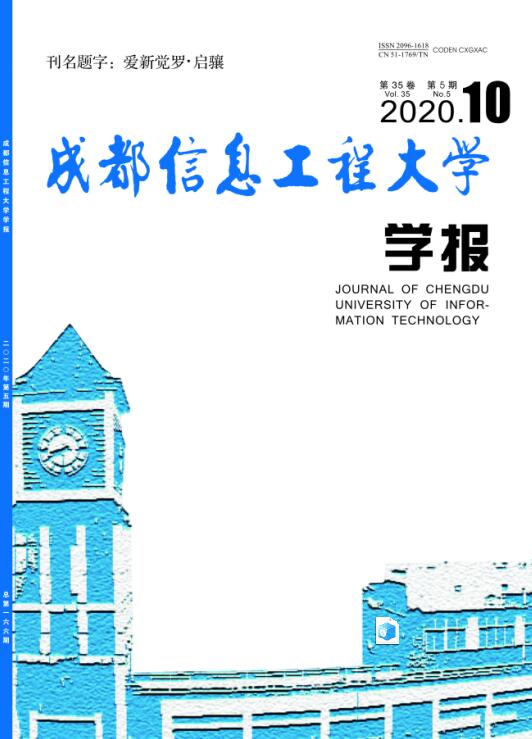WU Yaping,ZHOU Xueyun,SUN Yingyao,et al.Ya’an City Geological Hazard Risk Assessment based on Information Entropy Model[J].Journal of Chengdu University of Information Technology,2025,40(02):251-256.[doi:10.16836/j.cnki.jcuit.2025.02.018]
基于信息量模型的雅安市地质灾害危险性评价
- Title:
- Ya’an City Geological Hazard Risk Assessment based on Information Entropy Model
- 文章编号:
- 2096-1618(2025)02-0251-06
- 分类号:
- P694
- 文献标志码:
- A
- 摘要:
- 基于ArcGIS空间分析,对四川省雅安市进行地质灾害危险性评价,选取高程、坡度、坡向、年均降雨量、土地利用类型、断层距离、道路距离和水系距离作为地质灾害危险性区划因子,应用信息量模型分别对滑坡、崩塌和泥石流进行危险性评价,进而采用栅格最大值法实现综合地质灾害风险评价,将雅安市的地质灾害危险区划分为极低、低、中、高和极高危险区。结果表明:研究区内极高危险区主要分布在道路和水系两侧沿线,极低危险区主要位于人类工程活动少的区域; 极高危险区和高危险区面积占比14.9%,灾害率为69.1%,灾害点空间分布与危险等级呈正相关性,表明雅安市灾害危险性区划较为合理,研究成果将为该地区地质灾害风险评价提供良好的依据。
- Abstract:
- Based on ArcGIS spatial analysis, a geological hazard risk assessment was conducted in Ya’an City, Sichuan Province. Elevation, slope, aspect, average annual rainfall, land use type, distance from faults, distance from roads, and distance from water systems were selected as the geological hazard zoning factors for Ya’an City. Information quantity models were used to evaluate the hazards of landslides, collapses, and mudslides, Furthermore, the grid maximum method is used to achieve comprehensive geological hazard risk assessment, and the geological hazard risk areas in Ya’an City are divided into extremely low, low, medium, high, and extremely high-risk areas. The research results indicate that the extremely high-risk areas in the study area are mainly distributed along both sides of roads and water systems, while the extremely low-risk areas are mainly located in areas with low human engineering activities; The area of extremely high risk areas and high-risk areas accounts for 14.9%, with a disaster rate of 69.1%. The spatial distribution of disaster points is positively correlated with the risk level, and the verification results indicate that the disaster risk zoning in Ya’an City is relatively reasonable, and the research results will provide a good basis for geological disaster risk assessment in the region.
参考文献/References:
[1] 谭玉敏,郭栋,白冰心,等.基于信息量模型的涪陵区地质灾害易发性评价[J].地球信息科学学报,2015,17(12):1554-1562.
[2] 牛全福,程维明,兰恒星,等.基于信息量模型的玉树地震次生地质灾害危险性评价[J].山地学报,2011(9):243-249.
[3] 王佳佳,殷坤龙,肖莉丽.基于GIS和信息量的滑坡灾害危险性评价——以三峡库区万州区为例[J].岩石力学与工程学报,2014(4):797-808.
[4] 高振记,邬伦,赵兴征.基于GIS的深圳市滑坡危险性区划研究[J].灾害学,2014,29(1):67-74.
[5] Komac M.A landslide susceptibility model using the analytical hierarchy process method and multivariate statistics in perialpine Slovenia[J].Geomorphology,2006,74(1):17-28.
[6] 胡涛,樊鑫,王硕,等.基于逻辑回归模型和3S技术的思南县滑坡易发性评价[J].地质科技通报,2020,39(2):113-121.
[7] Zhu L,Huang L,Fan L,et al.Landslide susceptibility prediction modeling based on remote sensing and a novel deep learning algorithm of a cascade-parallel recurrent neural network[J].Sensors,2020,20(6):1576.
[8] 刘坚,李树林,陈涛.基于优化随机森林模型的滑坡易发性评价[J].武汉大学学报(信息科学版),2018,43(7):1085-1091.
[9] 温鑫,范宣梅,陈兰,等.基于信息量模型的地质灾害危险性评价:以川东南古蔺县为例[J].地质科学通报,2022,41(2):290-299.
[10] 高克昌,崔鹏,赵纯勇,等.基于地理信息系统和信息量模型的滑坡危险性评价——以重庆万州为例[J].岩石力学与工程学报,2006,25(5):991-996.
[11] 赵帅,赵洲.基于信息量模型的地质灾害易发性评价[J].水力发电,2019,45(3):27-32.
[12] 李光辉,铁永波.基于信息量模型的综合地质灾害易发性建模方法对比研究[J].灾害学,2023,38(3):212-221.
[13] 范雅捷,范宣梅,方成勇.基于栅格最大值法的县域综合地质灾害建模[J].地质科技通宝,2022,41(2):197-208.
[14] 樊芷吟,苟晓峰,秦明月,等.基于信息量模型与Logistic回归模型耦合的地质灾害易发性评价[J].工程地质学报,2018,26(2):340-347.
[15] 陈曦炜,裴志远,王飞.基于GIS的贫困地区降雨诱发型地质灾害风险评估——以湖北省恩施州为例[J].地球信息科学学报,2016,18(3):343-352.
备注/Memo
收稿日期:2023-10-24
通信作者:周学云.E-mail:42333700@qq.com
